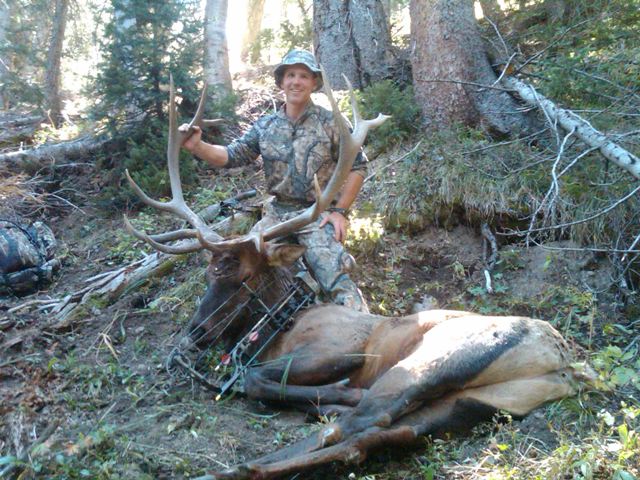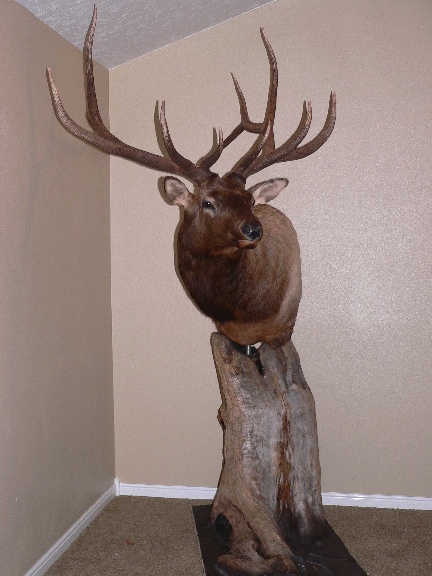The Cost of Hunting Out of State
 For many hunters, the thought of traveling out of state for an elk hunt may seem daunting. The homework of finding an area, scouting, and planning for such an epic adventure can be overwhelming, especially for a first-time elk hunter or someone who lives thousands of miles away. Uncertainty about the true cost of such a trip, added to the many other factors involved, can be enough to turn even the most eager hunter away.
For many hunters, the thought of traveling out of state for an elk hunt may seem daunting. The homework of finding an area, scouting, and planning for such an epic adventure can be overwhelming, especially for a first-time elk hunter or someone who lives thousands of miles away. Uncertainty about the true cost of such a trip, added to the many other factors involved, can be enough to turn even the most eager hunter away.
There are definitely options to help mitigate some of these legitimate concerns. For some, using the services of an outfitter may be the best choice. However, the added $3000-5000 for their services might be cost-prohibitive for many. Another option is using an outfitter to get you into elk country with a drop camp. This option typically saves some costs, but can range from $1500-3000, keeping the reality of hunting elk still out of reach for many hunters. If you don’t have a good buddy who lives in elk country, your final option is a DIY (Do-It-Yourself) elk hunt.
There are many resources available to help non-resident hunters prepare for an out-of-state elk hunt. Local Fish and Game websites often have great resources to get hunters pointed in the right direction. Additionally, there is a wealth of information in the form of tips and tactics here at Elk101.com to help shorten the learning curve. One of the most elusive bits of information, however, can be the actual costs of making it all happen. From the time you leave your home until the time you return, what costs will you be faced with? Assuming you will be heading out on a DIY trip, here is a breakdown of costs you might encounter along the way (for guided or drop camps, the added cost of your outfitter will need to be factored in as well).
 The first thing to consider is transportation. Driving is the easiest option as it allows you to pack all the gear you’ll need, as well as transport a truckload of coolers filled with elk meat back home! Due to time constraints however, driving from Maryland to hunt elk on the Oregon coast might not be feasible, so you might need to factor in the cost of a plane ticket, shipping of hunting gear, and a 4X4 rental vehicle for the week. If you are able to drive, you’re looking at the cost of gas and a few meals along the way. For an average driving trip, fuel and food for a day or two of driving is going to cost you $150-200 each way. If you’re flying and renting a car, you could be into the trip $1,000 or more.
The first thing to consider is transportation. Driving is the easiest option as it allows you to pack all the gear you’ll need, as well as transport a truckload of coolers filled with elk meat back home! Due to time constraints however, driving from Maryland to hunt elk on the Oregon coast might not be feasible, so you might need to factor in the cost of a plane ticket, shipping of hunting gear, and a 4X4 rental vehicle for the week. If you are able to drive, you’re looking at the cost of gas and a few meals along the way. For an average driving trip, fuel and food for a day or two of driving is going to cost you $150-200 each way. If you’re flying and renting a car, you could be into the trip $1,000 or more.
Once you’ve arrived, you’re going to need some camp food. We eat pretty lean at our elk camps, but some guys look forward to a large meal of steak and potatoes every afternoon. At the very least, you’re going to need to make sure you’re getting the calories and carbs to keep you going for a week in elk country. Whether you pick up your food before you leave home, or you stop in the last town before you reach elk camp, a trip to the grocery store for a weeks worth of camp food is going to cost you $150-250 per person per week.
No elk hunting trip is complete without gearing up. No matter how much gear you currently own, it seems like there are always a few more things you’ll need for your big trip. New boots, rangefinders, arrows, you name it, but spending a few hundred dollars at your local Pro Shop or Outdoor Retailer is pretty much inevitable.
There are many things required to make an elk hunting trip materialize, and perhaps the most important is a hunting license and/or elk tag. We’ve covered the application processes for western states in the 2011 Elk101.com Elk Hunting Application Summary, so for this exercise we’ll assume we are purchasing an OTC (over-the-counter) license/tag. Some states have a limited number of OTC tags available, so be sure to plan ahead and make your purchase beforehand. Nothing could be more deflating than having everything come together, then showing up to find that there are no elk tags available. License/tag costs vary greatly from state to state, with the average price for a license/tag being $775. Excluding some of the high-cost draw states, OTC tags are available ranging from $544 to $641 and easier to draw tags are available in states like Wyoming, New Mexico, and Montana with prices ranging from $641 to $812.
 These costs will get you into the game, but it’s best to think positive and be prepared to spend some money once you’ve tasted success. If you decide to have your elk processed at a local butcher, you can expect to pay $150-250 to have it cut and wrapped and ready to transport home in coolers. If you are flying, you can expect to pay a few hundred dollars to fly the extra coolers home. If you’re driving, some dry ice under a sheet of cardboard in the bottom of your coolers will keep your meat frozen until you can get it into your freezer at home. Enough dry ice to keep 3-4 coolers cold will run you $60-80.
These costs will get you into the game, but it’s best to think positive and be prepared to spend some money once you’ve tasted success. If you decide to have your elk processed at a local butcher, you can expect to pay $150-250 to have it cut and wrapped and ready to transport home in coolers. If you are flying, you can expect to pay a few hundred dollars to fly the extra coolers home. If you’re driving, some dry ice under a sheet of cardboard in the bottom of your coolers will keep your meat frozen until you can get it into your freezer at home. Enough dry ice to keep 3-4 coolers cold will run you $60-80.
 Lastly, don’t forget to set some money aside for your favorite taxidermist. After such an investment of time, energy, and finances, you’re going to want to be able to proudly display your trophy of a lifetime! When the final audit is performed, you’re likely looking at around $1500 on the low side and up to $3000 or more depending on how far you have to travel and how big of a bull you get! Start planning now to make that dream hunt in elk country a reality!
Lastly, don’t forget to set some money aside for your favorite taxidermist. After such an investment of time, energy, and finances, you’re going to want to be able to proudly display your trophy of a lifetime! When the final audit is performed, you’re likely looking at around $1500 on the low side and up to $3000 or more depending on how far you have to travel and how big of a bull you get! Start planning now to make that dream hunt in elk country a reality!
